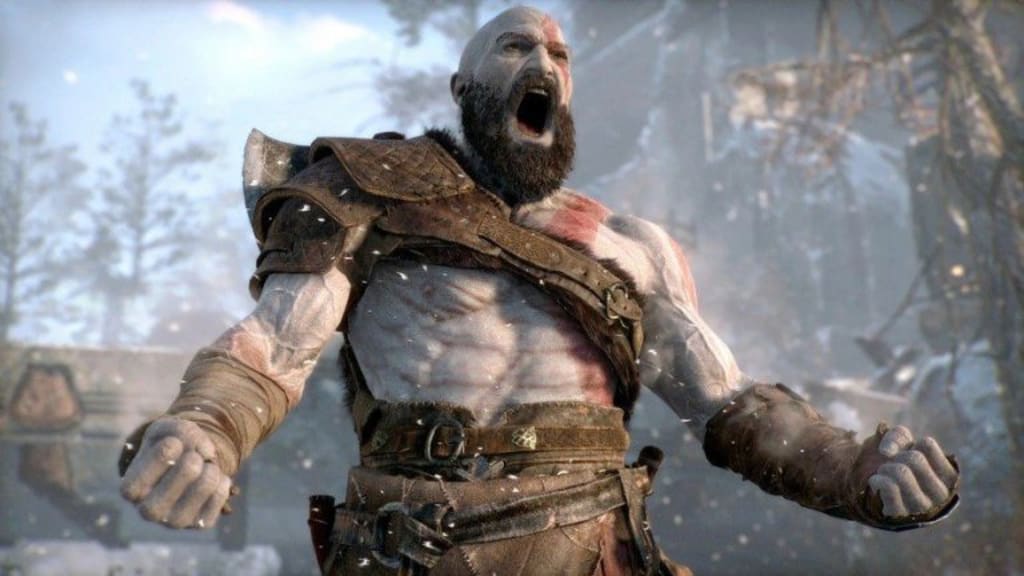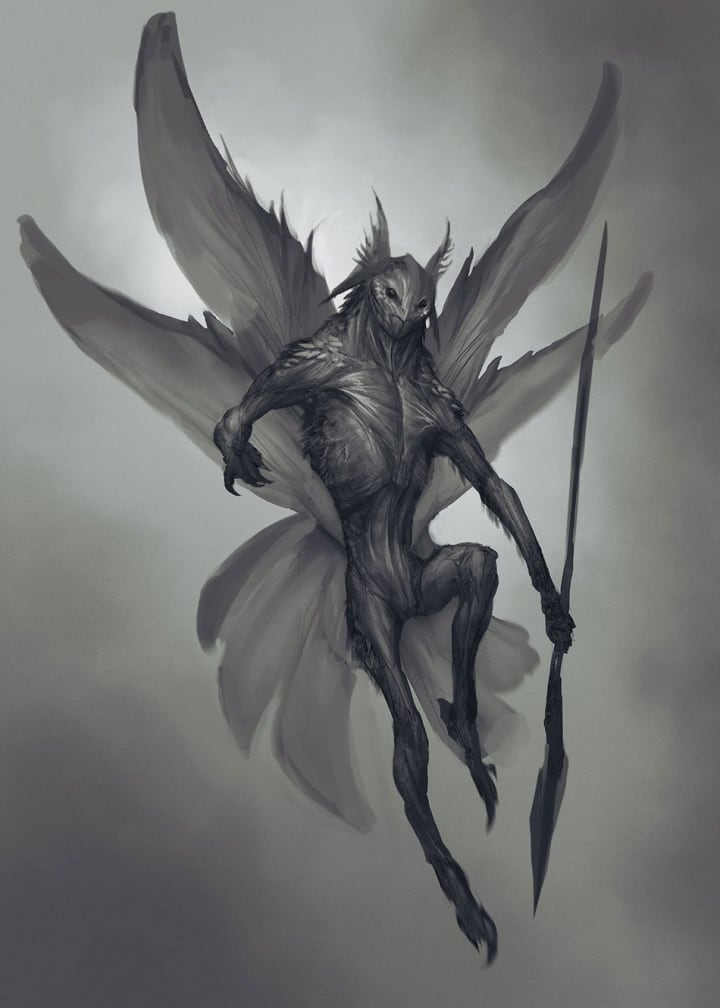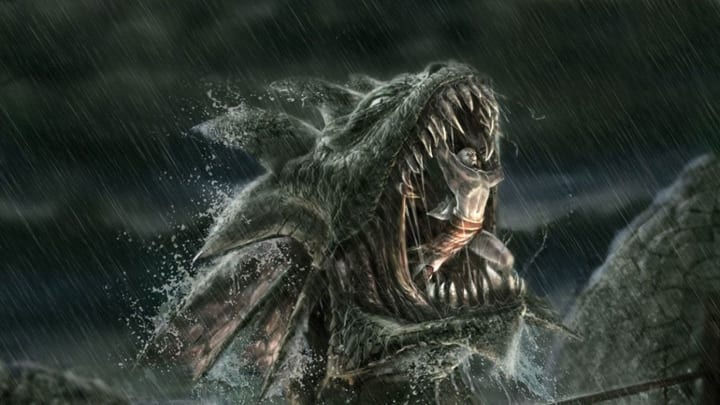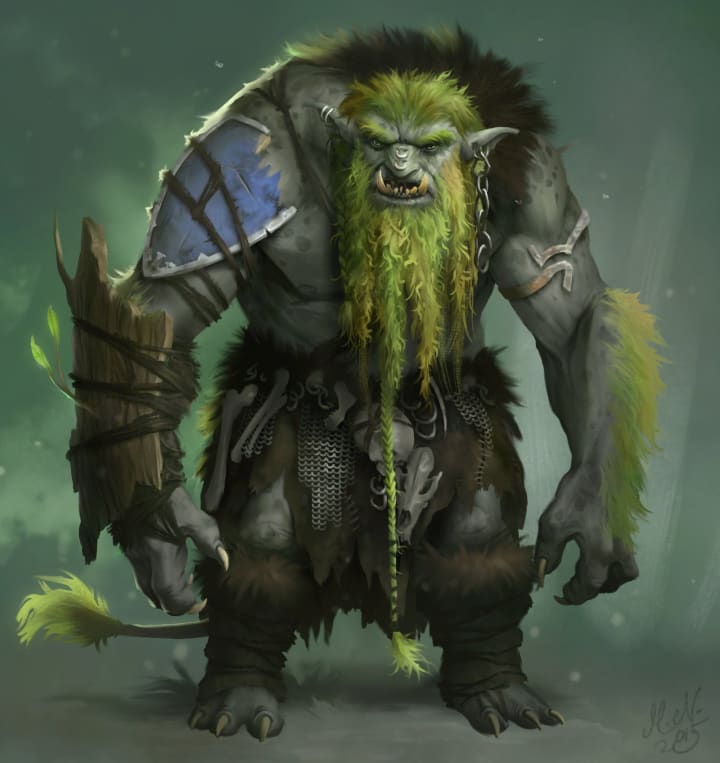5 Mythical creatures in god of war video game part-3
Ogre, Dark ELF, Hecatonchires, Wraith, Troll

1., Ogre:

The ogre is a legendary creature that has been depicted in many different cultures throughout history. In European folklore, ogres are typically depicted as giant, humanoid monsters with grotesque features such as sharp teeth, horns, and wild hair. They are often depicted as being brutish and unintelligent, and are known for their tendency to eat humans.
The origins of the ogre myth are unclear, but some scholars believe that it may have originated from ancient stories about giants and other powerful beings. In many cultures, ogres were seen as symbols of chaos and destruction, and were often associated with natural disasters such as earthquakes and floods.
In some cultures, ogres were also associated with magic and witchcraft. In African folklore, for example, ogres were often depicted as powerful sorcerers who could transform themselves into animals or control the elements. In some Native American cultures, ogres were associated with shamanism and were believed to have the power to control the spirits of animals and plants.
In more recent times, the image of the ogre has been popularized by works of fiction such as J.R.R. Tolkien's "Lord of the Rings" series, in which ogres are depicted as monstrous warriors serving the dark lord Sauron.
In popular culture, ogres are often portrayed as being dim-witted, violent and cruel, but there are also many stories and films that present a more sympathetic portrayal of the creature. In the movie "Shrek", for example, the titular ogre is initially portrayed as a frightening monster, but is later revealed to have a heart of gold and a deep capacity for love and compassion.
Overall, the history and mythology of the ogre is complex and multifaceted, and its image has evolved over time to reflect changing cultural attitudes and beliefs. Despite their fearsome reputation, ogres have continued to captivate the human imagination for centuries, and remain a popular subject in literature, film, and other forms of art and entertainment.
2., Dark Elf:

Dark Elves are a mythical race of beings that have been depicted in various cultures throughout history. In Norse mythology, they are known as the Dökkálfar, and are one of the two main races of Elves, the other being the Ljósálfar, or Light Elves.
The Dark Elves were believed to dwell in Svartálfaheimr, a subterranean world that was said to be located beneath the roots of the world tree Yggdrasil. They were known for their dark complexion and their skill in crafting, especially in the creation of magical objects and weapons.
The Dark Elves were also associated with death and the afterlife. In some myths, they were believed to be the guardians of Hel, the underworld ruled by the goddess of the same name. They were said to be responsible for guiding the souls of the dead to their final resting place, and for ensuring that the natural order of the universe was maintained.
In modern fantasy literature and media, Dark Elves are often portrayed as complex and nuanced characters, with their dark nature and skills in crafting making them both feared and respected. In J.R.R. Tolkien's "The Lord of the Rings", for example, the Dark Elves, or Moriquendi, are depicted as a dwindling race who are mistrustful of outsiders and who have a deep connection to the natural world.
In the Marvel Comics universe, Dark Elves are depicted as a race of powerful warriors who live in the realm of Svartalfheim, and who have often clashed with the Asgardian gods. In the Thor movies, the Dark Elves are depicted as a sinister and dangerous race, with their leader Malekith seeking to use a powerful weapon to plunge the universe into darkness.
Overall, the mythology and history of the Dark Elves is complex and multifaceted, with different cultures and media interpreting them in different ways. Despite their dark reputation, Dark Elves continue to be a popular subject in modern fantasy literature and media, and are likely to continue to captivate the human imagination for centuries to come.
3., Hecatonchires:

Hecatonchires are a mythical race of beings that have been depicted in Greek mythology. They are also known as the Hundred-Handed Ones, and were said to be the children of the primordial gods Uranus and Gaia.
According to legend, the Hecatonchires were born with a hundred hands and fifty heads each, and were incredibly powerful beings. They were known for their immense strength, and were said to have been instrumental in the overthrow of their father Uranus by the titan Cronus.
In some versions of the myth, the Hecatonchires were imprisoned by their father after they were born, but were eventually freed by their brother Cronus. In gratitude, the Hecatonchires helped Cronus in his battle against the gods, throwing boulders and other large objects to create earthquakes and other natural disasters.
Despite their fearsome appearance, the Hecatonchires were often depicted as being gentle and kind-hearted, and were said to have a deep connection to nature. In some myths, they were even worshipped as gods of the natural world, with their immense power allowing them to control the elements and shape the landscape as they saw fit.
In modern media, the Hecatonchires have often been depicted as powerful and awe-inspiring beings, with their immense size and strength making them formidable opponents. In the video game "God of War", for example, the Hecatonchires are portrayed as massive creatures with multiple arms and the ability to manipulate the elements.
Overall, the mythology and history of the Hecatonchires is complex and fascinating, with their enormous size and power capturing the imagination of generations of storytellers and artists. While they may be fearsome and intimidating, they are also a testament to the human capacity for imagination and creativity, and are likely to continue to fascinate and inspire for many years to come.
4., wraith:

Wraiths are a type of mythical creature that have been depicted in various cultures and mythologies throughout history. In general, wraiths are supernatural entities or spirits that are often associated with death, the afterlife, and the spirit world.
The origin of the term "wraith" can be traced back to the Old Norse word "raith," which means "ghost" or "specter." In Scottish folklore, wraiths are said to be the spirits of the dead, who return to haunt the living and warn them of impending danger or death.
In other cultures, wraiths are depicted as malevolent spirits that feed on the life force of the living. In the video game "World of Warcraft," for example, wraiths are depicted as ghostly beings that drain the life force of their enemies, while in the popular TV show "Supernatural," wraiths are depicted as creatures that feed on the souls of their victims.
In literature and media, wraiths are often portrayed as elusive and mysterious creatures, with their supernatural powers and abilities making them difficult to confront or defeat. In J.R.R. Tolkien's "The Lord of the Rings," for example, wraiths are depicted as powerful servants of the Dark Lord Sauron, who are nearly invulnerable to physical attacks and can only be defeated through the use of powerful magic.
Overall, the mythology and history of wraiths is complex and multifaceted, with different cultures and media interpreting them in different ways. Despite their frightening reputation, wraiths continue to be a popular subject in modern fantasy literature and media, and are likely to continue to captivate the human imagination for centuries to come.
5., Troll:

Trolls are a type of mythical creature that have been depicted in various cultures and mythologies throughout history. In general, trolls are humanoid creatures with large, muscular bodies, and are often depicted as being aggressive and violent.
The origins of trolls can be traced back to Norse mythology, where they were depicted as powerful and malevolent beings that lived in remote areas such as caves, forests, and mountains. In these myths, trolls were said to be incredibly strong and nearly invulnerable, and could only be defeated through the use of magic or trickery.
In other cultures, trolls were depicted as more benevolent creatures that were associated with nature and the earth. In Scandinavian folklore, for example, trolls were believed to be guardians of the forests and mountains, and were said to possess magical powers that allowed them to control the elements and shape the landscape.
In modern media, trolls are often depicted as monstrous creatures that are difficult to defeat. In the popular "World of Warcraft" video game, for example, trolls are depicted as powerful enemies that require a team of skilled players to defeat.
Despite their fearsome reputation, trolls continue to captivate the human imagination, and are often depicted as complex and multi-faceted creatures that possess both positive and negative qualities. Whether portrayed as powerful enemies or as guardians of the natural world, trolls remain a popular subject in fantasy literature and media, and are likely to continue to fascinate and inspire for many years to come.






Comments
There are no comments for this story
Be the first to respond and start the conversation.